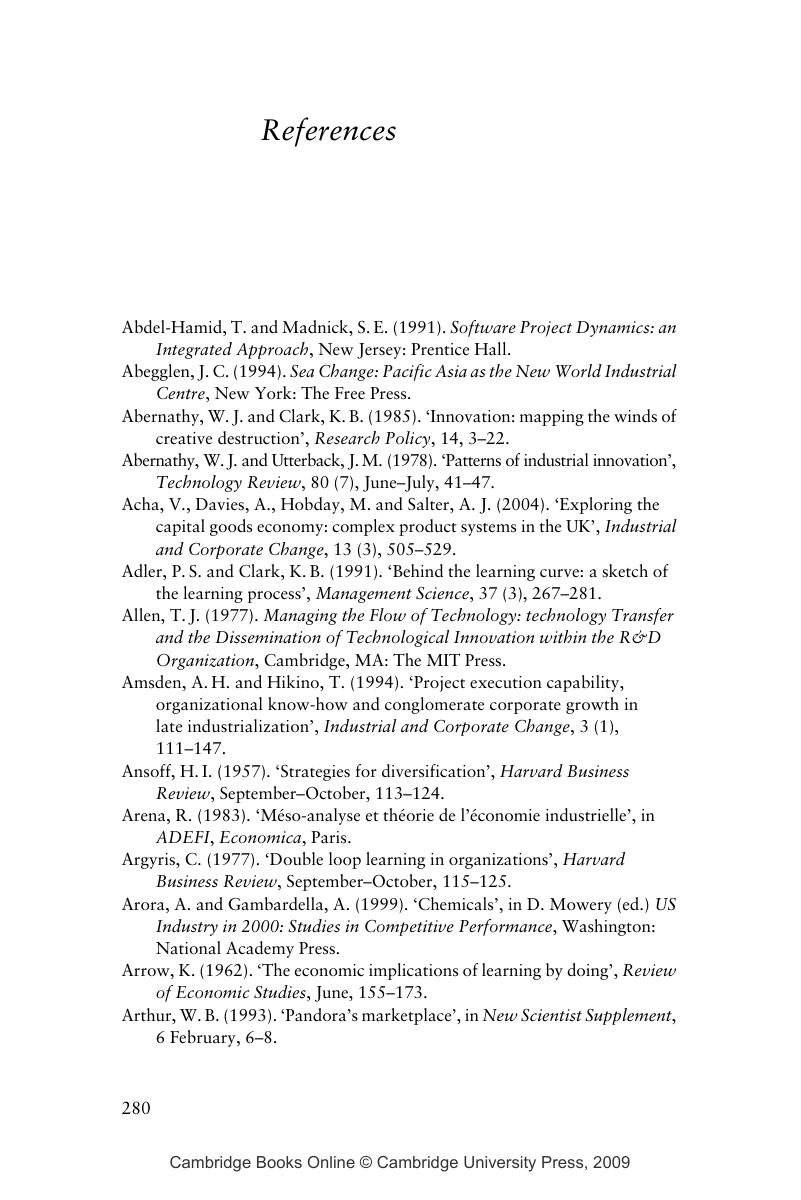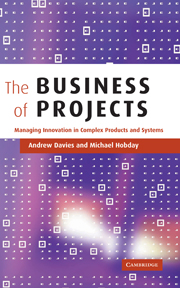Book contents
- Frontmatter
- Contents
- List of figures
- List of tables
- Foreword
- Acknowledgements
- Glossary
- 1 Introduction
- 2 The dynamics of innovation in complex products and systems
- 3 Business strategy and project capability
- 4 Systems integration and competitive advantage
- 5 The project-based organisation
- 6 Managing software-intensive projects
- 7 Learning in the project business
- 8 Integrated solutions for customers
- 9 Lessons for the project business
- Appendix A
- Appendix B
- Appendix C
- References
- Index
- References
References
Published online by Cambridge University Press: 22 September 2009
- Frontmatter
- Contents
- List of figures
- List of tables
- Foreword
- Acknowledgements
- Glossary
- 1 Introduction
- 2 The dynamics of innovation in complex products and systems
- 3 Business strategy and project capability
- 4 Systems integration and competitive advantage
- 5 The project-based organisation
- 6 Managing software-intensive projects
- 7 Learning in the project business
- 8 Integrated solutions for customers
- 9 Lessons for the project business
- Appendix A
- Appendix B
- Appendix C
- References
- Index
- References
Summary

- Type
- Chapter
- Information
- The Business of ProjectsManaging Innovation in Complex Products and Systems, pp. 280 - 300Publisher: Cambridge University PressPrint publication year: 2005



